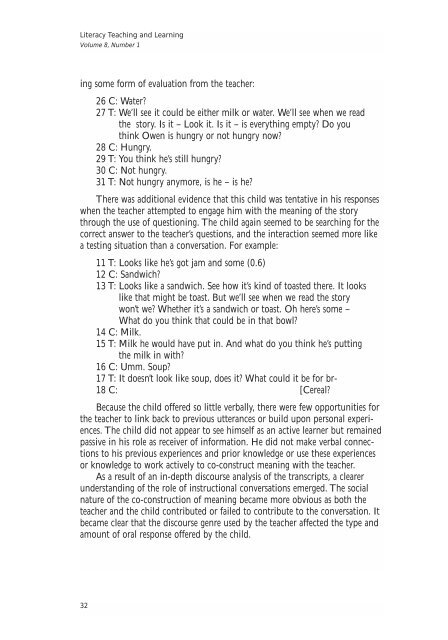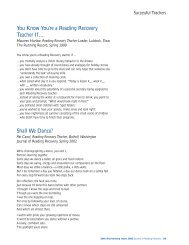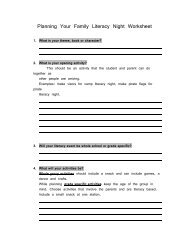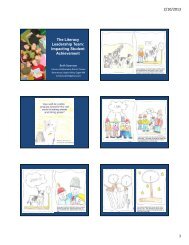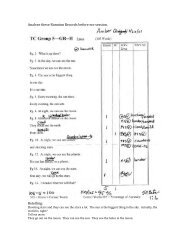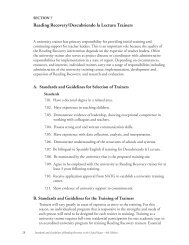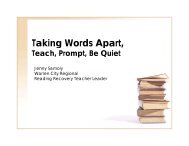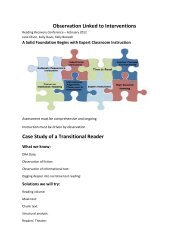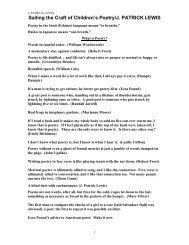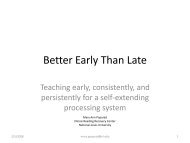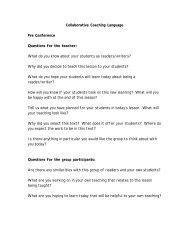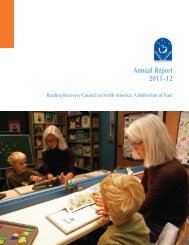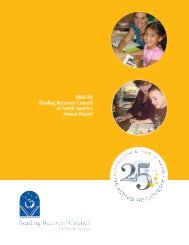Conversation As a Model of Instructional Interaction - Eric
Conversation As a Model of Instructional Interaction - Eric
Conversation As a Model of Instructional Interaction - Eric
Create successful ePaper yourself
Turn your PDF publications into a flip-book with our unique Google optimized e-Paper software.
layout-8/l-2003 1/7/04 12:29 PM Page 32Literacy Teaching and LearningVolume 8, Number 1ing some form <strong>of</strong> evaluation from the teacher:26 C: Water?27 T: We’ll see it could be either milk or water. We’ll see when we readthe story. Is it – Look it. Is it – is everything empty? Do youthink Owen is hungry or not hungry now?28 C: Hungry.29 T: You think he’s still hungry?30 C: Not hungry.31 T: Not hungry anymore, is he – is he?There was additional evidence that this child was tentative in his responseswhen the teacher attempted to engage him with the meaning <strong>of</strong> the storythrough the use <strong>of</strong> questioning. The child again seemed to be searching for thecorrect answer to the teacher’s questions, and the interaction seemed more likea testing situation than a conversation. For example:11 T: Looks like he’s got jam and some (0.6)12 C: Sandwich?13 T: Looks like a sandwich. See how it’s kind <strong>of</strong> toasted there. It lookslike that might be toast. But we’ll see when we read the storywon’t we? Whether it’s a sandwich or toast. Oh here’s some –What do you think that could be in that bowl?14 C: Milk.15 T: Milk he would have put in. And what do you think he’s puttingthe milk in with?16 C: Umm. Soup?17 T: It doesn’t look like soup, does it? What could it be for br-18 C: [Cereal?Because the child <strong>of</strong>fered so little verbally, there were few opportunities forthe teacher to link back to previous utterances or build upon personal experiences.The child did not appear to see himself as an active learner but remainedpassive in his role as receiver <strong>of</strong> information. He did not make verbal connectionsto his previous experiences and prior knowledge or use these experiencesor knowledge to work actively to co-construct meaning with the teacher.<strong>As</strong> a result <strong>of</strong> an in-depth discourse analysis <strong>of</strong> the transcripts, a clearerunderstanding <strong>of</strong> the role <strong>of</strong> instructional conversations emerged. The socialnature <strong>of</strong> the co-construction <strong>of</strong> meaning became more obvious as both theteacher and the child contributed or failed to contribute to the conversation. Itbecame clear that the discourse genre used by the teacher affected the type andamount <strong>of</strong> oral response <strong>of</strong>fered by the child.32


